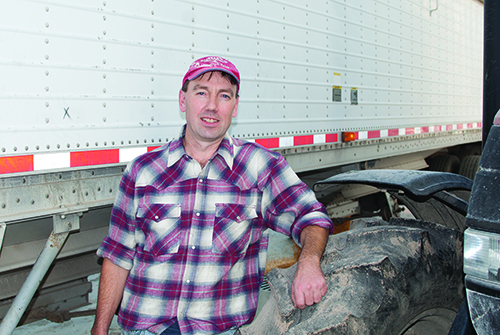
"The grid sampling was quite interesting. Some farmers have fields that do better in some areas than other areas," explained Les Danielson. "You may have suspicions as to those fields; however, the grid soil sampling results integrated with previous crop yields confirms those notions and tells you why."
Danielson works with his local co-op, River Country Co-op, for nutrition and crop consulting work. The River Country Co-op coordinated the grid soil sampling in partnership with Dairyland Labs.
"For example, portions of one field called for 650 pounds of potash while another area needed none. That is a huge difference," stated Danielson. "Until you measure, you simply do not know. The grid soil sampling also paid tremendous dividends on pH levels and I've realized better alfalfa and soybean yields ever since."
Among dairy producers, Les Danielson would definitely be unique in many ways. The Cadott, Wis., dairyman has leveraged his talents into a successful 600-acre cropping enterprise that also includes grain storage capacity for 210,000 bushels of corn.
In that business, he dries corn for 20 to 25 neighboring farmers in any given year. Almost all that corn eventually gets delivered to a nearby ethanol plant 12 miles away. That enterprise also enables him to own a commercially licensed scale in which he weighs all feedstuffs. Neighbors use it as well.
Danielson is an avid student of soil fertility cropping plans. Three years ago he completed a grid soil-sampling project on his entire farm so that nutrients can be applied based on specific needs within the field.
For his dairy herd of 35 Holsteins, the northern Wisconsin dairyman grows silage-specific corn and alfalfa. Those crops are harvested jointly with equipment co-owned by his brother, Jon, who dairy farms nearby. Danielson farms with his wife, Debora, and children, Larissa and Henry.
Danielson also had this to say in response to additional questions focused on "What drives their crops and forages":
When do you harvest forages?
We usually like to harvest pre-bud alfalfa for first crop. Then we cut every 32 to 35 days thereafter, but that doesn't always work. As for corn silage, moisture is king when storing feed in upright stave silos. You simply cannot store feed above 65 percent moisture unless you want to be in your silo in January with a pick.
I take corn stalks into a regional sampling area during their "dry down days." In that location, samples get processed to determine the best time to harvest for corn silage.
How are forage and tillage operations handled on your farm?
I share all my equipment with my brother, Jon, who milks 80 cows. We plant 50 percent no-till and no longer moldboard plow. However, we occasionally chisel plow.
My brother has a new chopper with a processor on it for corn silage, and we work together on the corn silage. I chop my own haylage with an older chopper to ensure timeliness and custom hire square baling for second-crop alfalfa. Sharing equipment works out quite well; it's a necessity with the cost of equipment these days.
How do you handle forage purchases?
I do not purchase feeds but sell a great deal of corn (grain) and soybeans. I do have a commercially licensed scale that is mainly used for the 210,000-bushel corn drying and storage system located on my farm. It comes in handy for hay as well, as it's always nice to scale feed when you are selling it. Last year we found a big variance on the weight of big square bales of alfalfa hay. Normally, those bales weigh 800 pounds, but last year those bales pushed 1,100 pounds.
To learn more about the Danwood Farms operation, turn to pages 768 to 770 in the December issue to read the Round Table "What drives their crops and forages."
If you are currently not a subscriber, please order a subscription. If you order today, we can be sure you get to read the December issue.
(c) Hoard's Dairyman Intel 2015
December 21, 2015










